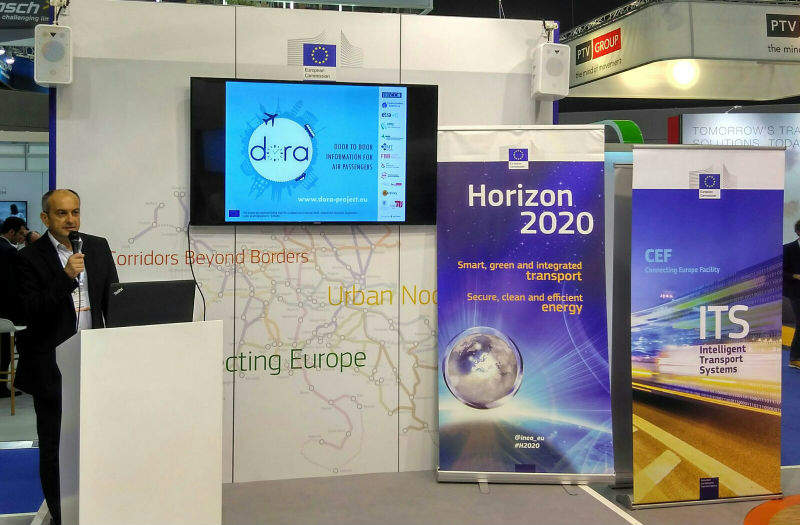
Optimising the congestion associated with the increased flow of air passengers, arduous security checks and limited capacity at many airports is one of the primary goals of the aviation industry.
A three-year research project under the EU programme Horizon 2020 aims to tackle these issues by launching DORA, an integrated information system that communicates with air passengers throughout their journey, from home to their destination, while taking into account traffic disruptions and unexpected congestion at the airport.
The project will investigate and design technologies for recognition of queues and indoor location services in airports.
At the European ITS Congress in Strasbourg, programme manager Dr Halid Hrasnica explained the concept behind the app, and the expectations from the first trial, starting this summer.
Eva Grey: What is DORA?
Dr Halid Hrasnica: DORA is a European project that started in June 2015 which aims to provide a system and application for air travellers, to help cut their overall travel time via a door-to-door solution.
The app helps passengers choose the best option to get to the airport so they can drive, take public transport, or carshare. When they are en route, they will also receive messages about any problems and delays, complete with route recommendations to make their way to the airport.
We also provide navigation within the airport building. We consider various disruptions in the airport itself, such as long security checks, closed check-in desks, or whether any of the accessibility points are unavailable for special needs passengers.
At destination, the app guides you to the luggage belt, and any transportation means you would like to use to reach the final point of your trip.
EG: What are the benefits for airports and airlines?
HH: The important benefit is that people don’t spend as much time in the airport; airports like passengers to arrive and leave on time. If there is a delay, you can start your journey later, and this is in the interest of the airport.
We work in partnership with Berlin and Palma di Mallorca airports, as well as Air Berlin, who are all trying to establish this kind of communication with the passenger even when they are not yet in the airport.
There is a whole chain of interested stakeholders. The cities and regions also want to optimise traffic, and this is important for them as well.
EG: What is happening during DORA’s first trial?
HH: We will be implementing DORA for passengers travelling between Berlin Airport and Palma de Mallorca, starting in August this year. We are targeting 500 passengers or more, to help us get the feedback we need to improve the service, and we will look at results in one year’s time.
EG: What do you perceive to be the biggest challenges in launching this service?
HH: The main challenge is to be able to involve as many cities and regions as possible, at least in Europe.
We have the technological means to develop the project, but unfortunately right now we don’t have standards on the data structure, so there is some work to be done there, but it is possible. We have an open gateway, which means that other regions can adopt DORA, but it is also possible to integrate the app into third party services.
We made it open because we know a single product like this cannot succeed – it has to be part of something more complete. Before commercialisation, somebody will hopefully take this model and create a good service.



